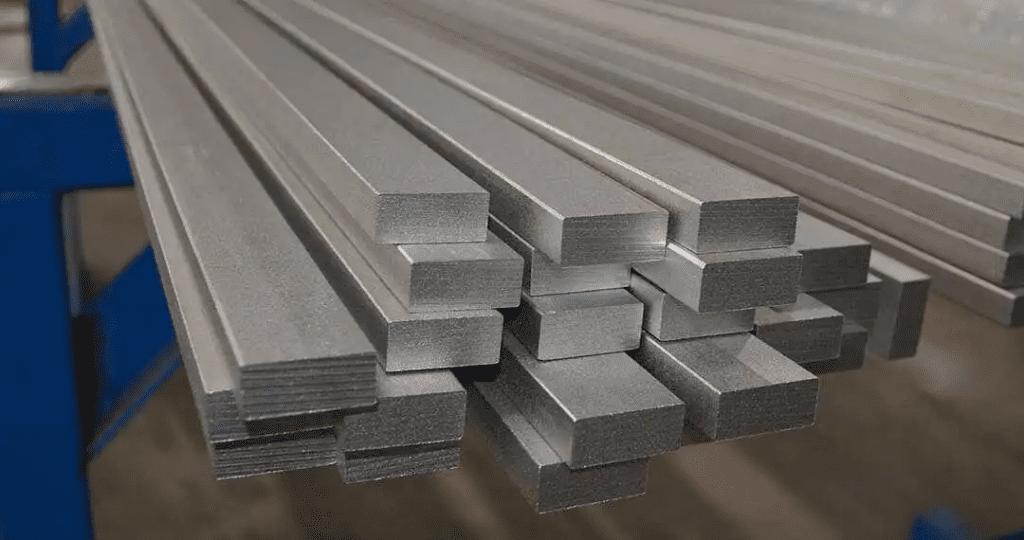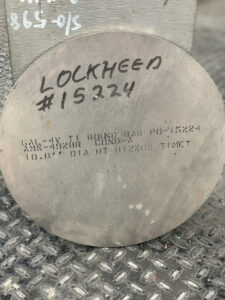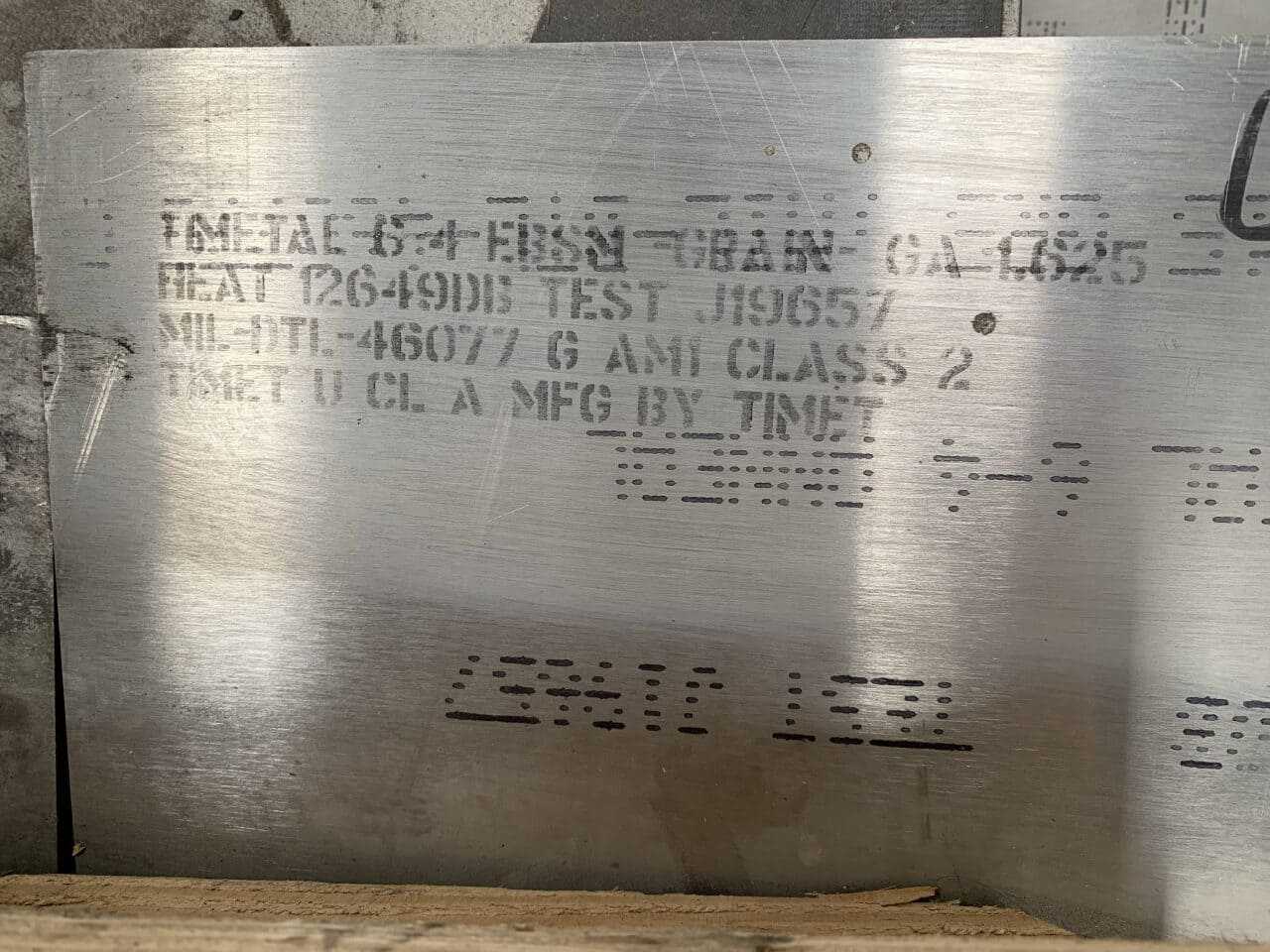Titanium is a lightweight metal that has revolutionized multiple industries due to its unique combination of properties, including a high strength-to-weight ratio, high corrosion resistance, and remarkable biocompatibility.
Understanding the various types of titanium alloys and their specific applications is essential for optimizing performance and ensuring the best outcomes in your projects.
Whether constructing the advanced airframe components of aerospace industry marvels or crafting durable and safe medical implants, each titanium grade offers distinct advantages.
Join us as we closely analyze the different grades and alloys of the titanium metal, providing insights into their properties and uses across aerospace, medical, marine, industrial, and other critical sectors.
From chemical processing equipment to titanium alloy components, professionals can make informed decisions and harness the full potential of this versatile metal in their work.
Commercially Pure (CP) Titanium
Commercially pure titanium (CP Titanium) contains more than 99% titanium with various amounts of carbon, hydrogen, iron, and oxygen to enhance strength. The greater the amount of oxygen, the greater the strength. The chart below indicates the maximum amount (percentage) of each element that can be added to titanium for each grade:
| Commercially Pure Titanium: Elements and Strength | |||||||
| GRADE | Carbon | Hydrogen | Iron | Nitrogen | Oxygen | Titanium | Tensile Strength (KSI) |
| 1 | 0.08 | 0.015 | 0.2 | 0.03 | 0.18 | Balance | 35 |
| 2 | 0.08 | 0.015 | 0.3 | 0.03 | 0.25 | Balance | 50 |
| 3 | 0.08 | 0.015 | 0.5 | 0.05 | 0.35 | Balance | 65 |
| 4 | 0.08 | 0.015 | — | 0.05 | 0.4 | Balance | 80 |
CP Titanium is known for its excellent corrosion resistance and biocompatibility, making it ideal for applications in jewelry, eyeglass frames, implanted medical devices, and orthopedic and dental implants.
Titanium’s biocompatibility ensures that it is non-toxic and does not cause adverse reactions when used within the human body, a critical factor for medical implants, such as artificial joints and cardiac valves in the medical industry.
Furthermore, in chemical processing, titanium’s resistance to corrosive environments extends the lifespan of equipment, reducing maintenance costs and downtime. This makes CP Titanium valuable in power generation and oil and gas drilling operations.
Alloys That Are Similar to Commercially Pure Titanium
Titanium alloys offer the same strength and corrosion resistance as pure titanium. Titanium acquires greater strength and workability when combined with varying traces of aluminum, chromium, cobalt, copper, iron, manganese, molybdenum, nickel, niobium, tantalum, vanadium, and zirconium.
With these enhanced characteristics, titanium alloys have many more industrial applications compared to pure titanium. Three types of titanium alloys—grades 7, 11, and 12—are similar to commercially pure titanium.
- Grade 7 is similar to grade 2 commercially pure titanium and provides medium strength, good ductility, and excellent weldability. It includes as much as 0.2% palladium, making it the most corrosion-resistant titanium alloy and ideal for piping, fittings, valves, condensers, and heat exchangers.
- Grade 11 is similar to grade 1 commercially pure titanium and offers optimum ductility, cold formability, and weldability. It includes as much as 0.25% palladium to enhance crevice corrosion resistance, making it useful for chemical processing, desalination, and marine applications.
- Grade 12 provides excellent high-temperature strength and weldability, as well as crevice corrosion resistance and acid resistance. It contains 0.6-0.9% nickel and 0.2-0.4% molybdenum.
Additionally, titanium alloy types such as alpha beta alloy and near alpha titanium alloys exhibit unique properties suitable for various aerospace and industrial applications. Alpha beta alloys, known for their high strength and good corrosion resistance, are the most common titanium alloy used in many sectors.
Near alpha titanium alloys offer enhanced corrosion resistance and are ideal for high-temperature environments, providing durability and performance across different alloy grades.
|
Buy Certified High-Quality Metals for Industrial Solutions |
||
|
New Aluminum |
New Steel |
New Stainless Steel |
 |
 |
 |
| Reliable supply: Consistent, certified aluminum stock you can trust. High-quality material: Superior-grade aluminum for precision needs. Custom cuts: Accurate cuts down to thousandths of an inch. |
Durability and strength: Reliable for projects needing long-lasting, tough materials. Cost-effective: Quality steel that offers strength without breaking the bank. Custom cutting: Precise cuts tailored to exact needs with top-tier cutting tools. |
Sustainability: Highly eco-friendly as the most recyclable metal on earth. High durability: Resistant to corrosion and wear, ensuring long-lasting performance. Custom precision cuts: Tailored to your specifications with quick, accurate results. |
Different Types of Titanium Alloys
There are several ways to classify the different types of titanium alloys—by strength, corrosion resistance, and high-temperature service. Here we’ll use titanium phases to compare the different types of titanium alloys and how they vary in strength, weldability, and heat-treatability.
 Titanium is an allotropic element, meaning it can exist in two or more different structural forms. Titanium has two dominant allotropic phases—alpha and beta (α+β)—that determine the various properties of titanium alloys. The alpha alloys phase is a close-packed hexagonal structure, and the beta alloys phase is a body-centered cubic structure.
Titanium is an allotropic element, meaning it can exist in two or more different structural forms. Titanium has two dominant allotropic phases—alpha and beta (α+β)—that determine the various properties of titanium alloys. The alpha alloys phase is a close-packed hexagonal structure, and the beta alloys phase is a body-centered cubic structure.
Aluminum, oxygen, nitrogen, and carbon added to titanium induce the alpha phase. Vanadium, molybdenum, iron, chromium, and manganese added to titanium induce the beta alloys phase.
Alpha alloys and beta titanium alloys include combinations of elements used to induce the alpha and beta phases. The table below compares some of the key characteristics that would help guide the selection of the different types of titanium for fabricating a component or structure.
| Alpha Alloys | Alpha-Beta Alloys | Beta Alloys | |
| Heat-Treatable | no | yes | yes |
| Weldability | very good | most are weldable | generally weldable |
| Strength | low to medium | medium to high | highest |
| High-Temperature Creep Resistance | optimum | not as good as alpha | limited to intermediate temperatures |
The various amounts of elements that can be combined with commercially pure titanium grades result in an overwhelming number of different types of titanium to choose from.
Ti-6Al-4V is an alpha-beta titanium alloy and one of the most commonly used titanium alloys. The primary alloying elements of Ti-6Al-4V are aluminum and vanadium, giving these alpha-beta alloys low density and excellent corrosion resistance.
Access High-Quality Titanium at Competitive Prices
Converting raw minerals into usable types of titanium is complex and costly, making new titanium sourced directly from US mills more expensive than other common metals used in manufacturing.
Industrial Metal Service offers an innovative solution to high titanium prices. Our extensive inventory includes verified titanium remnants, both commercially pure and alloyed, available at significant discounts compared to new titanium.
At Industrial Metal Service, we pride ourselves on top-notch customer service, ensuring every client’s seamless and satisfactory experience. Our team excels at out-of-the-box thinking, consistently finding the best solutions to meet your specific needs.
By choosing us, you gain access to high-quality titanium at competitive prices, backed by a commitment to exceptional service and innovative problem-solving.
 Angle
Angle Cast Plate
Cast Plate Diamond Plate
Diamond Plate Flat Bar
Flat Bar Plate
Plate Round Bar
Round Bar Square Bar
Square Bar Square Tubing
Square Tubing Round Tubing
Round Tubing Angle
Angle Channel
Channel Diamond Plate
Diamond Plate I Beam
I Beam Round Bar
Round Bar Sheet
Sheet Square tubing
Square tubing Round Tubing
Round Tubing Rectangular Tubing
Rectangular Tubing Plate
Plate Rectangular Bar
Rectangular Bar Rectangular Tubing
Rectangular Tubing Round Bar
Round Bar Sheet
Sheet Square Bar
Square Bar Square Tubing
Square Tubing
